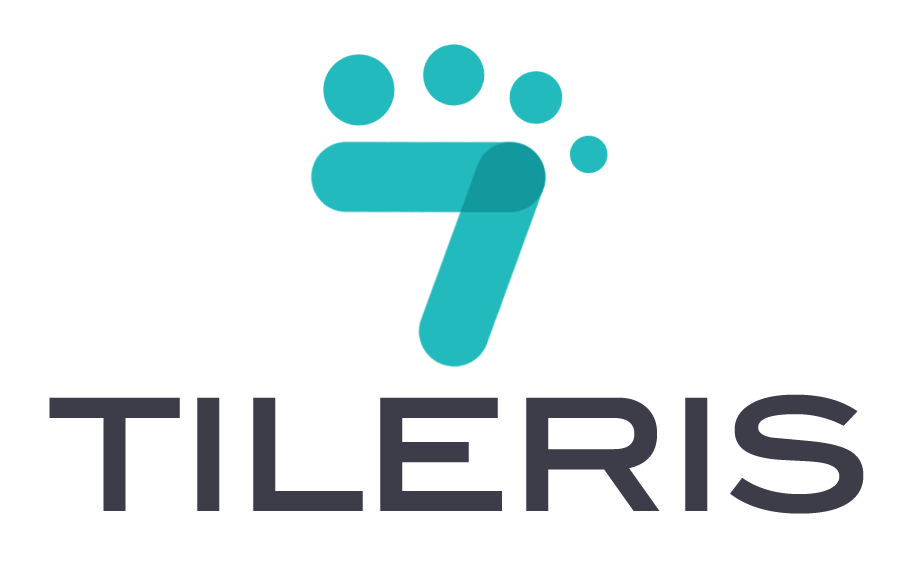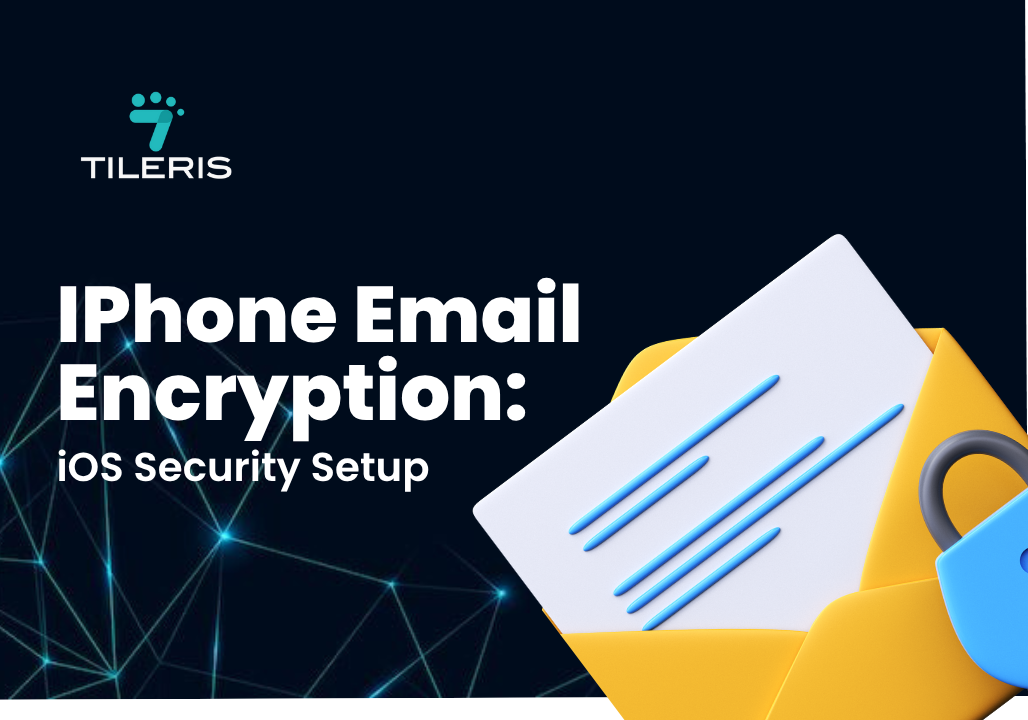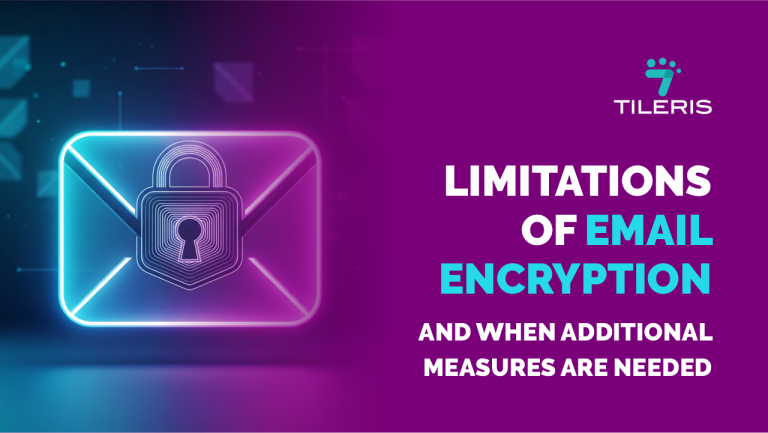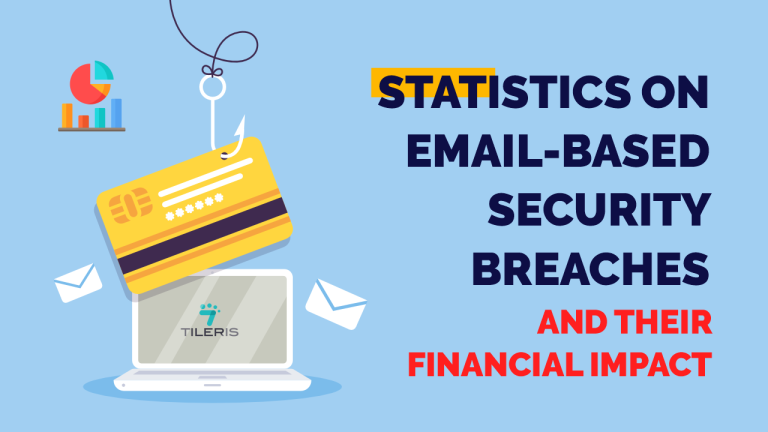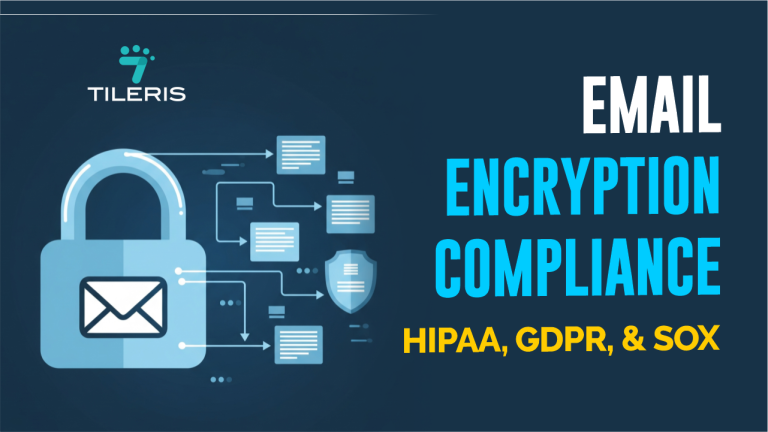iPhone Email Encryption: iOS Security Setup
Introduction
iPhone email encryption is a critical security layer that protects sensitive communications from unauthorized access, interception, and data breaches. As cybersecurity threats continue to evolve, implementing robust iPhone email encryption on iOS devices has become essential for both business environments and privacy-conscious individuals. This comprehensive guide examines the technical implementation of email encryption protocols on iPhone devices, focusing on S/MIME configuration, third-party encrypted email applications, and systematic troubleshooting methodologies.
iPhone Email Encryption
iPhone email encryption involves securing email communications through cryptographic protocols that protect messages from unauthorized access during transmission and storage. iOS natively supports multiple encryption standards, particularly S/MIME (Secure/Multipurpose Internet Mail Extensions), which provides both digital signing and encryption capabilities. Understanding the cryptographic foundations and proper implementation of these security mechanisms is crucial for maintaining confidential communications in today’s threat spread.
The iPhone email encryption process transforms readable email content into ciphertext that can only be decrypted by authorized recipients possessing the correct decryption keys. This end-to-end protection ensures message integrity, sender authentication, and data confidentiality across various email platforms and services.
S/MIME Configuration on iOS
Understanding S/MIME Architecture
S/MIME implements public key infrastructure (PKI) to establish secure email communications through asymmetric cryptography. The protocol utilizes X.509 digital certificates issued by Certificate Authorities (CAs) to authenticate sender identity and encrypt message content. On iOS devices, S/MIME integration occurs at the Mail application level, providing a seamless encryption and decryption processes without requiring additional software installations.
The cryptographic process involves two distinct certificates: a signing certificate for message authentication and integrity verification, and an encryption certificate for message confidentiality. These certificates contain public keys that correspond to private keys securely stored in the device’s keychain, ensuring that decryption operations remain protected within the iOS security boundary.
Certificate Acquisition and Installation
Obtaining S/MIME certificates requires interaction with a trusted Certificate Authority or enterprise PKI infrastructure. Commercial CAs such as DigiCert, GlobalSign, and Sectigo provide individual and enterprise-grade S/MIME certificates with varying validation levels. Enterprise environments typically deploy internal CAs through Microsoft Active Directory Certificate Services or similar PKI solutions.
Important Certificate Authority Changes: Recent updates to iOS certificate trust policies have impacted certain certificate providers. Specifically, Apple announced that S/MIME certificates issued from Entrust roots after November 15, 2024, will no longer be supported in upcoming iOS releases, though certificates issued on or before this date remain valid.
Certificate installation on iOS devices follows a multi-step process:
- Certificate Generation: The certificate enrolment process typically occurs through a web-based interface or enterprise management system. Users generate a certificate signing request (CSR) containing their public key and identifying information.
- Certificate Delivery: Once issued, certificates are delivered via email attachment (.p12 or .pfx format) or through mobile device management (MDM) systems in enterprise environments.
- iOS Installation Process:
- Opening the certificate file automatically launches the iOS certificate installation wizard
- The system prompts for the certificate password (if applicable)
- Certificate installation requires explicit user confirmation
- Successful installation places the certificate in the iOS keychain
Mail Application Configuration
Post-installation configuration requires specific settings within the iOS Mail application to enable S/MIME proper and effective functionality and these settings follows the process as follow:
Account-Level Configuration: Navigate to Settings > Mail > Accounts, select the appropriate email account, then tap “Account” followed by “Advanced.” The S/MIME section contains critical encryption settings that follow thus:
- S/MIME Certificate Selection: Choose the appropriate certificate for signing and encryption operations
- Sign Messages: Enable automatic digital signing for all outgoing messages
- Encrypt by Default: Activate automatic encryption when recipient certificates are available
- Per-Message Encryption: Allow manual encryption selection during message composition
Security Policy Implementation: These deployments often require specific S/MIME policies enforced through MDM solutions. These policies can mandate encryption for external communications, specify approved certificate authorities, and configure key escrow mechanisms for compliance requirements.
Advanced S/MIME Features
The modern S/MIME implementations on iOS support advanced cryptographic features such as:
Algorithm Selection: iOS supports multiple cryptographic algorithms including AES-256 (Advanced Encryption Standard with a 256-bit key) for symmetric encryption, RSA and ECDSA for asymmetric operations, and SHA-256 for hashing functions. The system automatically negotiates the strongest mutually supported algorithms between sender and recipient.
Certificate Validation: The iOS Mail application performs comprehensive certificate validation including:
- Certificate chain verification against trusted root CAs
- Certificate revocation list (CRL) checking
- Online Certificate Status Protocol (OCSP) validation
- Certificate validity period verification
Key Management: iOS implements secure key storage within the hardware-backed keychain, ensuring that private keys remain protected even if the device is compromised. Key access requires user authentication through biometric verification or passcode entry.
Third-Party iPhone email encryption Applications
ProtonMail
ProtonMail represents a leading solution for iPhone email encryption, implementing zero-knowledge encryption architecture that ensures even the service provider cannot access user communications. The application utilizes a hybrid encryption system combining RSA-4096 and AES-256 algorithms.
The Technical Architecture: ProtonMail’s iPhone email encryption occurs client-side within the iOS application, ensuring that plaintext never leaves the device unencrypted. The system generates unique public-private key pairs for each user account, with private keys encrypted using the user’s password through a key derivation function (KDF) based on bcrypt.
Cross-Platform Compatibility: The ProtonMail iPhone email encryption application maintains compatibility with web clients and other platforms through consistent encryption protocols. Messages sent between ProtonMail users remain end-to-end encrypted, while communications with external email providers can be password-protected or sent in plaintext based on user preferences making the iPhone email encryption strong and reliable.
Advanced Security Features of PontailMail:
- Perfect Forward Secrecy (PFS) through ephemeral key exchange
- Two-factor authentication (2FA) support
- Password-protected message sharing with external recipients
- Secure message expiration and self-destructing emails
- Integrated VPN services for enhanced privacy
Tutanota
Tutanota implements post-quantum cryptographic algorithms, preparing for potential threats from quantum computing developments. The application encrypts not only message content but also subject lines, sender information, and recipient details which important for iPhone email encryption of private and business details.
The Encryption Specifications: Tutanota utilizes AES-256 for symmetric encryption combined with RSA-2048 for key exchange which will be imported into the iPhone email encryption processes. The system implements additional security through bcrypt password hashing and secure random number generation for key derivation.
Unique Features:
- Complete metadata encryption including subject lines
- Integrated encrypted calendar and contact management
- Quantum-resistant algorithm implementation
- Open-source client applications for transparency
- Anonymous account creation capabilities
Additional Third-Party Solutions perfect for iPhone email encryption
SecureMyEmail: This application focuses on simplifying email encryption through automated certificate management and seamless integration with existing email accounts. The solution supports both S/MIME and PGP protocols while maintaining compatibility with standard email clients and will be a good implementation to the iPhone email encryption.
Hushmail: Designed for professional and healthcare environments, Hushmail provides HIPAA-compliant email encryption with automated key management. The iOS application integrates secure forms, digital signatures, and encrypted file attachments.
Mailfence: This Belgian-based service combines email encryption with digital signature capabilities, calendar integration, and secure document storage. The iOS application supports both OpenPGP and S/MIME protocols; a strong combination for iPhone email encryption.
Integration Considerations for iPhone email encryption
Third-party iPhone email encryption applications present specific integration challenges within iOS environments, and such challenges include:
System Integration: Unlike native S/MIME support, third-party applications operate within iOS sandbox restrictions, limiting integration with system-level email handling and notification systems when it comes to iPhone email encryption.
Enterprise Deployment: MDM solutions may require additional configuration to support third-party encrypted email applications, including app-specific VPN settings, certificate provisioning, and data loss prevention (DLP) policies.
Backup and Recovery: iPhone email encryption applications often implement special considerations for iOS backup and recovery processes, with some providers excluding encryption keys from iCloud backups to maintain security integrity.
Troubleshooting iPhone Email Encryption
S/MIME Configuration Issues
Certificate Installation Failures: Common installation problems include incorrect certificate formats, expired certificates, or missing intermediate CA certificates. Diagnostic steps to follow include the following:
- Certificate Format Verification: Ensure certificates are in PKCS#12 (.p12) or PFX format compatible with iOS
- Password Validation: Verify certificate password accuracy and character encoding
- Certificate Chain Completeness: Confirm all intermediate certificates are included in the installation package
- Device Storage Analysis: Check available keychain storage and remove expired certificates
Encryption/Decryption Failures: When S/MIME operations fail, systematic troubleshooting involves the following:
- Recipient Certificate Availability: Verify that recipient public keys are available in the device keychain
- Algorithm Compatibility: Confirm mutually supported cryptographic algorithms between sender and recipient
- Certificate Validity: Check certificate expiration dates and revocation status
- Key Access Permissions: Ensure proper iOS keychain access permissions
Third-Party Application Issues with iPhone email encryption
Authentication Problems: Encrypted email applications may experience authentication failures due to:
- Incorrect account credentials or two-factor authentication codes
- Network connectivity issues affecting server communication
- iOS application permissions restricting network access
- Certificate or key synchronization problems
Synchronization Failures: Email synchronization issues when it comes to iPhone email encryption applications often result from:
- Encryption key mismatches between devices
- Server-side synchronization delays
- Network timeout configurations
- iOS background app refresh restrictions
Network and Connectivity Troubleshooting
Corporate Network Restrictions: Enterprise environments may implement network policies that interfere with email encryption:
- Port Blocking: Verify that required ports (typically 993 for IMAPS, 465/587 for SMTPS) remain accessible
- Deep Packet Inspection (DPI): Some corporate DPI systems may interference with encrypted email protocols
- Certificate Authority Restrictions: Enterprise certificate filtering may block access to specific CAs
- Proxy Configuration: Corporate proxy servers may require specific configuration for encrypted email applications
VPN Interaction Issues: Virtual Private Network configurations can impact email encryption functionality by the following:
- Split tunneling configurations may route email traffic outside the VPN
- VPN-imposed DNS restrictions may prevent certificate validation
- MTU size limitations may fragment encrypted email packets
- VPN protocol conflicts with email encryption protocols
Performance Optimization
Encryption Performance Tuning: Optimizing email encryption performance involves several considerations which can not be overemphasized and they include:
- Key Length Selection: Balance security requirements with processing overhead
- Algorithm Preferences: Configure preferred cryptographic algorithms for optimal performance
- Certificate Caching: Implement recipient certificate caching to reduce lookup delays
- Background Processing: Configure iOS background app refresh for encrypted email applications
Storage Management: Encrypted email storage requires careful management:
- Keychain Capacity: Monitor iOS keychain storage utilization
- Certificate Lifecycle: Implement automated certificate renewal processes
- Message Archiving: Configure appropriate retention policies for encrypted messages
- Cache Management: Regularly clear application caches to maintain performance
Error Code Analysis
Common S/MIME Error Codes:
- Error 1: Certificate not found – indicates missing or incorrectly installed certificates
- Error 2: Invalid certificate – suggests certificate corruption or format issues
- Error 3: Encryption failed – typically indicates recipient certificate unavailability
- Error 4: Decryption failed – usually indicates private key access problems or algorithm mismatches
Third-Party Application Error Handling
Encrypted email applications typically provide detailed error logging for troubleshooting purposes. Common error categories include:
- Network connectivity failures
- Authentication and authorization errors
- Encryption/decryption processing errors
- Certificate validation failures
- Synchronization conflicts
The Security Best Practices
Certificate Management
Proper certificate lifecycle management ensures continued email encryption effectiveness for the key certificates processes:
Certificate Renewal: Implement automated certificate renewal processes before expiration dates to prevent service interruptions. Enterprise environments should deploy certificate management solutions that track expiration dates and initiate renewal workflows.
Key Escrow Considerations: Organizations may require key escrow capabilities for regulatory compliance or data recovery purposes. However, key escrow inherently reduces security by creating additional attack vectors, requiring careful risk assessment.
Certificate Revocation: Establish procedures for certificate revocation in cases of private key compromise, employee departure, or security incidents. Revocation procedures should include CRL updates and notification of communication partners.
Device Security Integration
iPhone email encryption effectiveness depends on comprehensive device security:
Device Encryption: Ensure iOS device encryption is enabled through Settings > Face ID & Passcode > Data Protection. Device-level encryption protects stored certificates and private keys.
Biometric Authentication: Configure Face ID or Touch ID for enhanced security when accessing encrypted email applications or certificate stores.
Application Security: Implement application-specific security measures including automatic lock timers, secure deletion of message caches, and restriction of screenshot capabilities.
Compliance and Regulatory Considerations
GDPR Compliance: Email encryption supports GDPR compliance by implementing appropriate technical measures for personal data protection. Organizations must document encryption procedures and ensure proper key management.
HIPAA Requirements: Healthcare organizations must implement encryption for protected health information (PHI) transmitted via email. S/MIME and third-party encrypted email solutions can satisfy HIPAA encryption requirements when properly configured.
Industry-Specific Regulations: Financial services, government, and other regulated industries may have specific email encryption requirements that influence technology selection and implementation procedures.
Conclusion
iPhone email encryption through S/MIME configuration and third-party applications provides robust protection for sensitive communications in both personal and business environments. Successful implementation requires understanding of PKI fundamentals, proper certificate management, and systematic troubleshooting approaches.
The evolving threat landscape demands continuous evaluation of encryption technologies and security practices. Organizations and individuals must balance security requirements with usability considerations while maintaining compliance with applicable regulations.
As quantum computing threats emerge, the transition to post-quantum cryptographic algorithms becomes increasingly important. Third-party encrypted email providers are already implementing quantum-resistant encryption, while traditional S/MIME may require updates to maintain long-term security effectiveness.
To take your cybersecurity to the next level, proceed to downloading our free security checklist, it’s packed with simple steps to help you stay protected online. And for more contents like this just head over to tileris.com.
If you’re looking for more hands-on support or more cyber security contents like this contact us, you can also request a free consultation with our AI agents, our experts are ready to guide you. Or, if you’d rather see how Tileris works in real time, go ahead and request a demo through our contact form.
